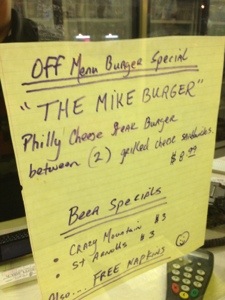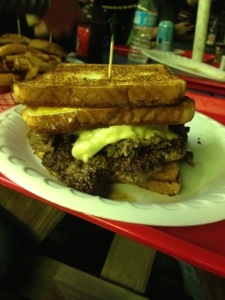As I noted before, there’s been a bit of an explosion in the bourbon and American whiskey market in the last few years. As a consequence, there’s lots of bullshit on the shelves — bottles made by marketers, full of sourced juice, with utterly fictional histories and backgrounds, positioned in such a way as to ABSOLUTELY mislead customers.
This is shitty behavior.
Fortunately, the liquor world is one of the first places to have gotten actual truth-in-labeling laws, and so the words on a liquor bottle actually MEAN something if you know what to look for.
Probably the most egregious label bullshit is hiding the provenance of the whiskey. N.B. that the word “produced” really just means “bottled.” If the bottle doesn’t say where it was distilled, then the odds are the marketers don’t want you to know. Pick another bottle; good whiskey is proud of where it comes from.
The next thing to look for is what the bottle claims it contains. The truly shitty operations will sell things like “spirit whiskey,” which is basically grain alcohol with some flavorings designed to mimic actual aged whiskey. This stuff is bullshit, and you should not buy it. Look for things that actually claim to be bourbon whiskey or rye whiskey.
But that doesn’t solve much; the “bourbon” name doesn’t mean as much as you think it does (for example, it doesn’t have to be from Kentucky). To be called bourbon, according to the Feds:
- Produced in the US
- The mash bill (mix of grain) must be 51% or more corn
- It must be distilled at less than 160 proof
- It must be age at 125 proof or below
- It must be aged in new, charred oak barrels
Note that there is no minimum aging required, nor is there anything about additives and flavorings. Adding shit to bourbon is completely legal, and shitty distillers and “producers” do it all the time.
The next step is what you need to look for: if it says “straight bourbon,” it can contain no additives and must be aged in those barrels for at least 2 years. Realistically, there’s no reason to buy something that isn’t straight.
A straight bourbon with no age statement on the bottle must be aged more than 4 years. (Oh, and the age statement must be the age of the youngest whiskey in the bottle; blending is okay, and is done all the time to produce a consistent product.)
A bourbon labeled “blended” may have coloring, flavoring, and other spirits (i.e., grain alcohol) added, but at least 51% of the product must be straight bourbon.
“Bottled in Bond” is an even more serious distinction. You won’t find a lot of marketing whiskey done this way, but (hilariously) the 1897 Bottled in Bond act was passed to regulate unscrupulous whiskey sellers who used coloring and flavoring and whatnot to dupe customers. Sound familiar?
BIB bourbon must meet all the requirements of straight bourbon, plus:
- It must be aged in a federally bonded warehouse for at least 4 years
- It must be bottled at 100 proof
- It must clearly state the identity of the distillery and, if different, the bottling location
- It must be the product of a single distilling season and one distiller at one distillery



